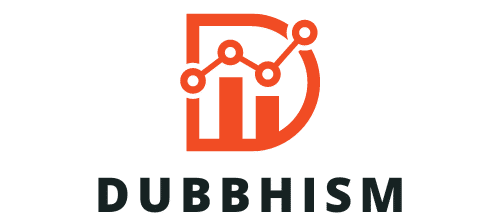The world of ecommerce is a rapidly evolving landscape. Strategies, tools, and tactics that worked a year ago might not be as effective today. As an ecommerce business, you must adapt to these changes and devise fresh strategies to stay ahead of the curve. One such tactic that has proven to be incredibly successful for ecommerce businesses of all sizes is dynamic pricing.
Dynamic pricing is a strategy that allows businesses to set flexible prices for products or services based on current market demands. It’s used by small to large-scale ecommerce businesses, to optimize their pricing strategies and maximize profits.
Avez-vous vu cela : What Are the Effective Customer Feedback Collection Methods for Small Service Businesses?
But how can you, as small ecommerce businesses, implement this strategy effectively? In this article, we will guide you through the ins and outs of dynamic pricing and how to put it to best use for your business.
Understanding Dynamic Pricing
Before embarking on your journey to implement a dynamic pricing strategy, you need to fully understand what it entails. Dynamic pricing, also known as surge pricing, demand pricing, or time-based pricing, is a pricing strategy where businesses change the price of their products or services based on supply and demand.
Sujet a lire : How Can Small Businesses Leverage Podcasts for Brand Building and Audience Engagement?
The idea is simple. When demand for a product is high, the price increases. Conversely, when demand is low, the price decreases. This method allows businesses to maximize their profits during peak demand times and encourage sales during slow periods.
The Significance of Market Data
To implement dynamic pricing, businesses need to leverage market data. This data can include a wide range of factors such as customer behavior, time of day, day of the week, competition, and overall market conditions.
Sophisticated dynamic pricing tools can collect and analyze this data in real-time. They can then predict trends and adjust prices accordingly. For instance, if the data shows a dip in demand for a product, the tool may lower the price to stimulate sales. On the other hand, if the data shows a surge in demand, the tool will increase the price.
Choosing the Right Dynamic Pricing Model
Choosing the right pricing model is crucial to the success of your dynamic pricing strategy. There are several types of dynamic pricing models that businesses can use, including cost-based pricing, customer-based pricing, and time-based pricing.
Cost-based pricing focuses on the cost of producing a product. The price of the product will fluctify based on changes in production cost. Customer-based pricing, on the other hand, is where prices are adjusted based on customer data and behavior. If a customer is more likely to purchase a product at a certain price point, the price will be set accordingly.
Time-based pricing considers the time of purchase. Prices may be higher during peak shopping hours and lower during off-peak hours. Depending on your business type and goals, one of these models might be more suitable than the others.
Implementing Dynamic Pricing in Your Ecommerce Business
Once you understand the dynamic pricing concept and have chosen the right model, it’s time to implement it in your ecommerce business. To do this effectively, you need to:
-
Choose a dynamic pricing tool: There are numerous dynamic pricing tools available in the market. These tools use data analysis and algorithms to adjust prices in real time. Choose a tool that fits your budget and meets your specific needs.
-
Monitor your competition: Keep an eye on your competition and understand their pricing strategies. This will help you to stay competitive and attract more customers.
-
Optimize your pricing strategy: Continually refine and optimize your pricing strategy based on data and customer feedback. Remember, the goal of dynamic pricing is not just to maximize profits but also to offer value to your customers.
In essence, implementing dynamic pricing in your ecommerce business can significantly enhance your profitability and competitive edge. However, it requires a deep understanding of your market, customers, and competition. It also necessitates the right tools and strategies. With the right approach, dynamic pricing can be a game-changer for your ecommerce business.
Utilizing Machine Learning and Pricing Software
Machine learning is a major player in data analysis for dynamic pricing. It feeds on data including past transactions, competitor pricing, customer behavior, and market trends to predict and set optimal prices. Dynamic pricing software with built-in machine learning capabilities can provide accurate insights and automate the process of price adjustments in real time.
When choosing a pricing software, it’s essential to consider your specific needs and budget. A good pricing software should not only fit your budget but also offer features that are relevant to your business. For instance, if your ecommerce business deals with a large number of SKUs, you might need a software capable of handling bulk pricing adjustments.
Additionally, the software should have real-time tracking and reporting features. This will help you monitor the impact of your pricing strategies and make necessary adjustments. It’s also beneficial if the software can integrate with other systems in your business such as inventory management and customer relationship management (CRM).
With the help of machine learning and the right pricing software, you can automate the process of adjusting prices based on current market conditions. This can not only save you time and resources but also ensure that your prices are always optimized for maximum profitability.
Monitoring Price Changes and Profit Margins
While dynamic pricing can significantly increase your profits, it’s equally important to monitor your price changes and profit margins. It’s crucial to strike a balance between maximizing profits and retaining customers. Drastic price changes can lead to customer dissatisfaction and ultimately result in loss of customers.
Consistent monitoring allows you to understand how your customers are responding to your pricing. If you notice a significant drop in sales after a price increase, it might indicate that the price is too high for your customers. In such a case, you might need to lower your prices or find ways to add more value to your products or services.
Conversely, if you notice a significant increase in sales after a price decrease, it might mean that your previous prices were too high, or the decrease has triggered a higher demand. You can use this information to adjust your prices and find the sweet spot that maximizes both sales and profit margins.
By consistently monitoring your price changes and profit margins, you can ensure that your dynamic pricing strategy is effective and contributing positively to your bottom line.
Conclusion
Implementing a dynamic pricing strategy can be an effective way for small ecommerce businesses to boost profitability and maintain a competitive edge. It involves leveraging market data, using the appropriate pricing model, utilizing machine learning and dynamic pricing software, and consistently monitoring price changes and profit margins.
Remember, the goal of implementing dynamic pricing is not just about maximizing profits. It should also aim to offer value to your customers and ensure their satisfaction. By balancing these two objectives, you can create a successful pricing strategy that propels your ecommerce business to greater heights.
Dynamic pricing can seem complex at first, but with the right understanding, tools, and approach, it can be a game-changer for your ecommerce business. It’s all about staying responsive to market trends and customer behavior, and being ready to adjust prices in real time. In doing so, you’ll not only maximize your profits, but also ensure your customers always feel they’re getting value for their money.











